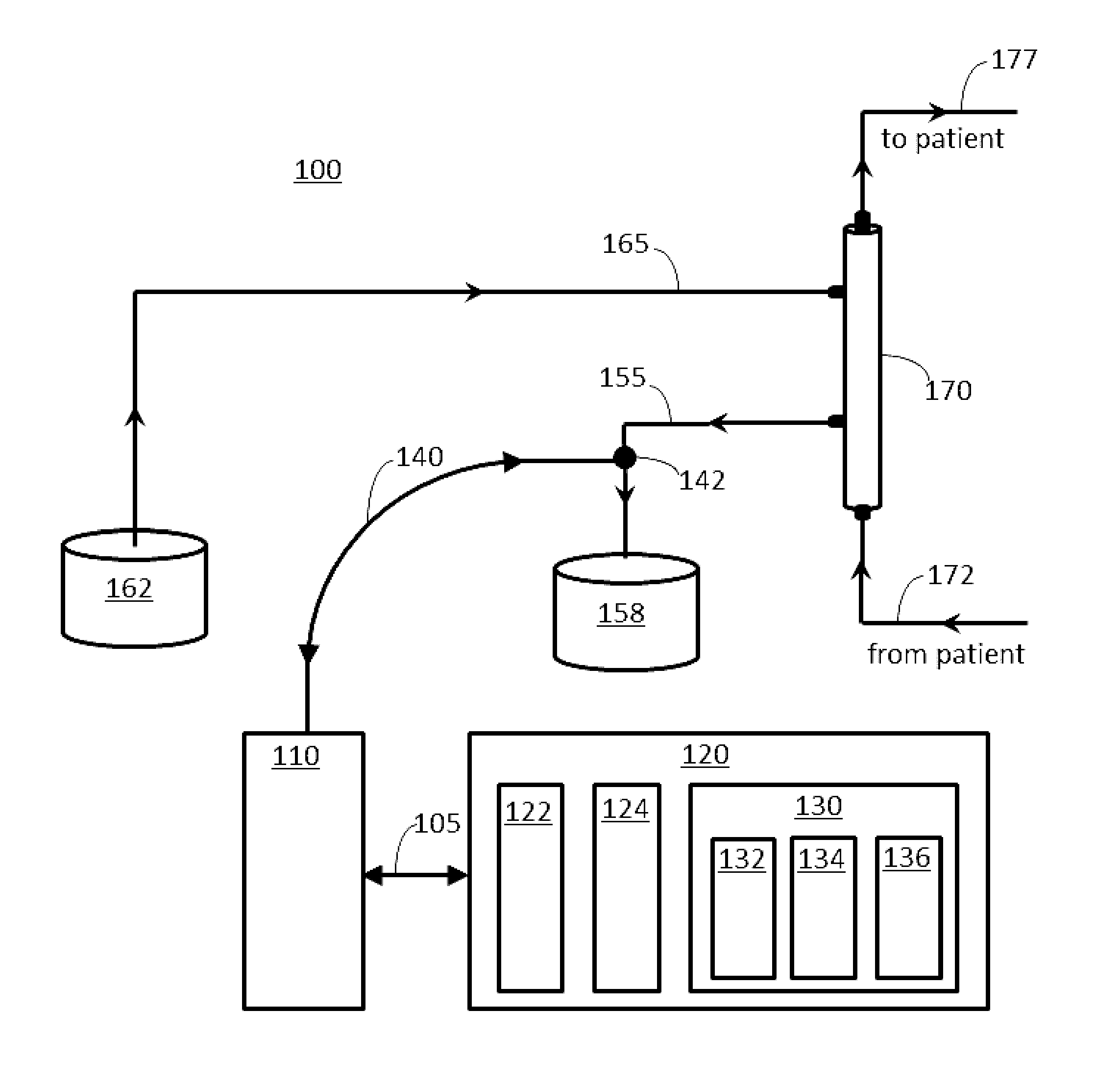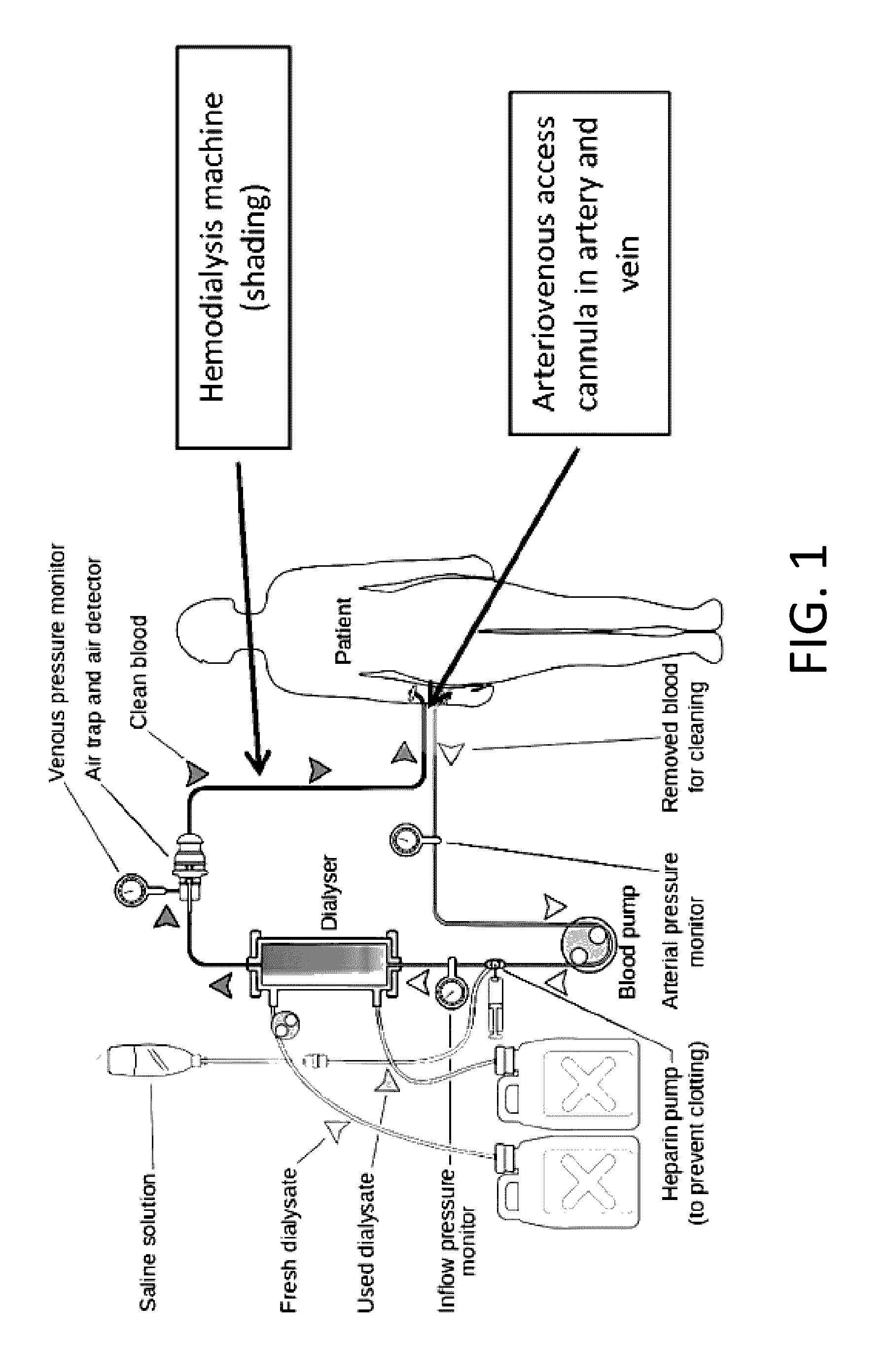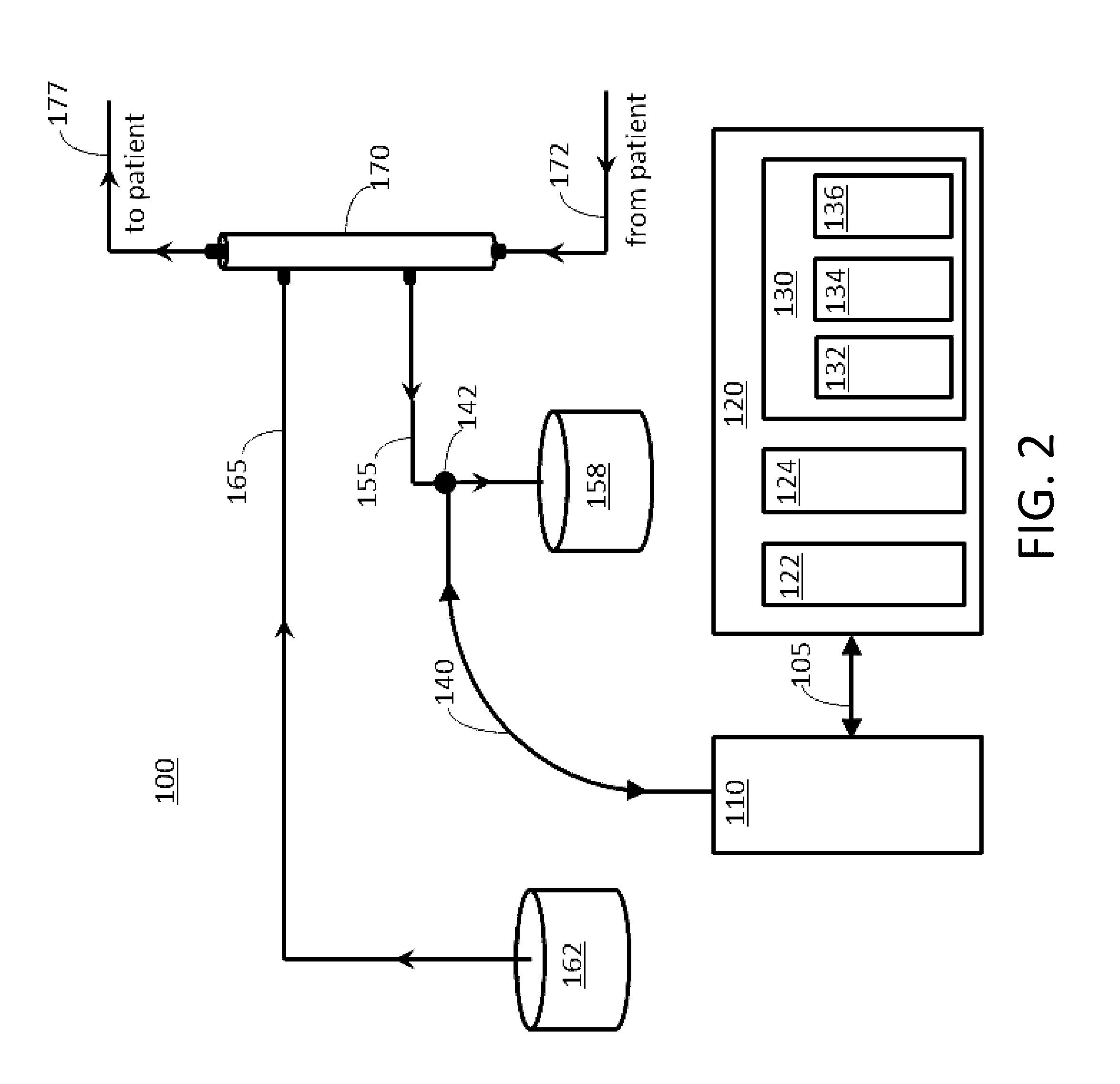System and method for monitoring the health of dialysis patients
- Summary
- Abstract
- Description
- Claims
- Application Information
AI Technical Summary
Benefits of technology
Problems solved by technology
Method used
Image
Examples
example
[0132]Six patients (three male and three female) with a differing history of hemodialysis (first instance to 6 years) were the subject of a study for measuring the kinetics of target analytes during a hemodialysis treatment using Raman spectroscopy. Dialysate samples were collected at beginning (A), middle (B), and end (C) of the prescription cycle (Samples A, B, and C). All patients were dialyzed against G2231 dialysate and Optiflux High Fluid Coil. There was no significant variation in total prescription time (221-244 minutes). No significant variation in eating was observed. One patient (Patient #1) was a known diabetic. Characteristics of the dialysis patients are shown in the table in FIG. 5.
[0133]For analysis, 500 μL of a sample associated with a patient was placed on a foil tray, and allowed to air dry. This dried sample was analyzed using the Bruker Senterra Raman microscope. Comparisons were made between “dried” and “liquid” phase measurements. Correlations were already est...
PUM
 Login to View More
Login to View More Abstract
Description
Claims
Application Information
 Login to View More
Login to View More - R&D
- Intellectual Property
- Life Sciences
- Materials
- Tech Scout
- Unparalleled Data Quality
- Higher Quality Content
- 60% Fewer Hallucinations
Browse by: Latest US Patents, China's latest patents, Technical Efficacy Thesaurus, Application Domain, Technology Topic, Popular Technical Reports.
© 2025 PatSnap. All rights reserved.Legal|Privacy policy|Modern Slavery Act Transparency Statement|Sitemap|About US| Contact US: help@patsnap.com



